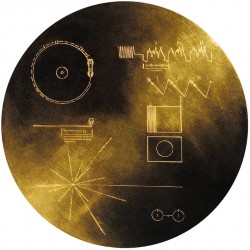The unlikeliest of pick me ups
The Best of Daria: Reliving the Animated Teenage Angst Comedy (LA Weekly)
Unbelievably, I can remember nearly every episode of this, the last of MTV’s intelligent programming.
The Best of Daria: Reliving the Animated Teenage Angst Comedy (LA Weekly)
Unbelievably, I can remember nearly every episode of this, the last of MTV’s intelligent programming.
“Peter Pan” by Teenagers in Tokyo
“Upside Down” by Paloma Faith
“Something Good Can Work” by Two Door Cinema Club
Palin accuses Obama of being in bed with big oil (Yahoo! News)
I can’t even BEGIN to comment on this without spontaneously combusting. WHY is she still here?!
 I had a bit of an epiphany this morning while reading a paper copy of Wired in bed. After finishing an article on the history of hacking and its future in the world of entrepreneurs, a subscription card spiraled its way out onto the comforter. This left me pondering the fact that, due to the advertising within, this huge collection of words and pictures representing days of work could be sold for $1 per subscribed issue. And further considering the reality that I am, in truth, more willing to look at ads in Wired from companies that I’d otherwise ignore because I have a real respect for this particular magazine and its writers, editors and creative directors. I also read every issue cover to cover, even if I’m not particularly interested in, say, a feature on the future of insulin pumps. I don’t do this with Wired online content, as proven by the fact that I merely skimmed it on my iPhone moments after putting the paper magazine down to hop over to wired.com.
I had a bit of an epiphany this morning while reading a paper copy of Wired in bed. After finishing an article on the history of hacking and its future in the world of entrepreneurs, a subscription card spiraled its way out onto the comforter. This left me pondering the fact that, due to the advertising within, this huge collection of words and pictures representing days of work could be sold for $1 per subscribed issue. And further considering the reality that I am, in truth, more willing to look at ads in Wired from companies that I’d otherwise ignore because I have a real respect for this particular magazine and its writers, editors and creative directors. I also read every issue cover to cover, even if I’m not particularly interested in, say, a feature on the future of insulin pumps. I don’t do this with Wired online content, as proven by the fact that I merely skimmed it on my iPhone moments after putting the paper magazine down to hop over to wired.com.
I also started thinking in parallel about an article from Ars Technica entitled Curated computing: what’s next for devices in a post-iPad world, an article which I really liked but didn’t entirely grasp the scope of until just a few minutes ago.
The iPad is computing as a magazine.
There has been a lot of talk about reading magazines and other print media on the iPad and how this will save these dead tree industries. I think it might. But I’m now thinking more broadly than that.
Just like how Wired can curate the best of the geek world each month, surrounding it in a shell of hard-fought credibility, respect and cool, the iPad does the same for computing experiences. They are curated, as Ars suggests but they are also an experience unto themselves by virtue of being presented on the iPad. Just like I’m willing to delve more deeply into Wired’s content when its in front of me in paper form than on a website, I’m more willing to pursue any content on the iPad because I like engaging with the iPad.
And, thus, magazine computing. (I’m coining it now.)
(From Case for the iPad)
…sitting in a fantastic old factory-conversion in a city somewhere, I would totally do my stay-at-home freelance jobs inside an antique steamer trunk. Like this:
Of course, I’d have to be a very successful blogger/designer/what have you because this monster costs $3,000 (and doesn’t even include the coordinating chair.) Damn you, Restoration Hardware!
For a long time, I said I wanted to live in an IKEA showroom. The sentiment is still appealing to me, even after some truly horrific “assembly” experiences with their furniture. “IKEA: the furniture of wishful thinking.” Anyway, I want to scrap that idea now because…
I’m moving into the Pantone Hotel in Brussels. An entire hotel colored in Pantone palettes is SUBLIME. I’m calling dibs on the “earthy, rich” (read: brown) room.
(Gizmodo)
Jalopnik is delighting me today with a post on old car brochures (I guess brought on by their blurb on the Eldorado glovebox bar.) While flipping through the online gallery, I stumbled across the most fascinating classic car amongst the marketing fluff: the 1951 Kaiser Traveler.

Now, I am not normally, under any circumstances, a classic car guy. I can recognize why the greats are legendary and wouldn’t turn down a free vintage Ferrari or Bugatti. I’ll even watch Wayne Carini stumble through a barn on occasion. But I’m much more interested in technology of modern cars.
The Traveler challenges that, though, by offering the (I thought) uniquely contemporary blend of sleek, car-like design with functionality and utility more commonly associated with SUVs. In short, it was the mid-20th century equivalent of the crossovers I lust after today.
So, while I’ll more than likely trade my A3 for an Audi Q5 or BMW 3 Series GT when the time comes, it’s good to know that the car buying world was not as bleak in 1951 as I feared. And that a good idea is eternal.
Just caught this video on NewNowNext Music and nearly fast-forwarded through it but then it sucked me in. It’s a pretty well-done video for a new artist and the song itself isn’t all that bad, either. Goth-y people + piano = relatively okay!
But, wait a minute. That spinning around on your back while mid-air sure looks familiar, no? Nine Inch Nails much? Watch it again at 1:30 and then watch “Closer” at the 1:28 mark:
The entire distorted Victorian theme really reminded me, too, of my favorite NIN video, “The Perfect Drug.” All the way from 1997:
Assuming that Sasha Sacket wasn’t influenced by Trent Reznor and his band would be completely silly. And thinking that director Sean Morris wasn’t inspired by Mark Romanek is on another level of absurd entirely. It’s just funny seeing ideas from over a decade ago being trotted out as (convincingly) fresh.
This is from a time when car-buying was apparently awesome. From a GM sales brochure for the 1957 Cadillac Eldorado. A bar. In the glovebox. Of an everyday passenger car. This beats having vodka in the trunk, no?
 At least according to the Australians, the Voyager 2 spacecraft has been hacked by aliens and is beaming back a signal to Earth that has been indecipherable for the last few weeks. Despite a few launch difficulties, scientists have been able to get 33 years of stellar (pun intended) performance from a piece of 70s technology intended to last for 4 years – making it difficult to understand why the Voyager probe is now feeding only unreadable material to NASA.
At least according to the Australians, the Voyager 2 spacecraft has been hacked by aliens and is beaming back a signal to Earth that has been indecipherable for the last few weeks. Despite a few launch difficulties, scientists have been able to get 33 years of stellar (pun intended) performance from a piece of 70s technology intended to last for 4 years – making it difficult to understand why the Voyager probe is now feeding only unreadable material to NASA.
So what’s going on? Remember:
Each Voyager space probe carries a gold-plated audio-visual disc in the event that either spacecraft is ever found by intelligent life-forms […]
Is it possible that, on its way to Sirius, Voyager 2 encountered something or someone? What’s going on in the heliosphere, anyway? And where is Arthur C. Clarke when you need him?
(Thanks The Daily Telegraph, NASA and Wikipedia)
